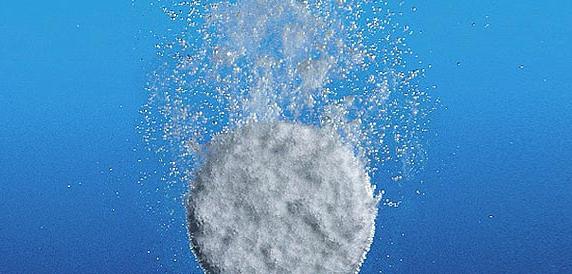Apple acid
Appleic acid (formula HOOCCH2CH (OH) COOH),oxyantaric, dibasic hydroxycarboxylic (fruit) acid. It is represented by a colorless crystalline substance. Apple acid is readily soluble in ethanol and water, poorly in ether.
The substance has cleansing, antioxidant, anti-inflammatory, moisturizing and slightly pronounced astringent properties.
Classification of acids HOOCCH2CH (OH) COOH
In natural conditions, the L-appleacid. The melting point is one hundred degrees. It dissolves well in water. In ethanol, the solubility is 68.3 g, in diethyl ether 1.9 g per hundred grams of solvent.
D-malic acid has a melting point of 130.8 degrees. The solubility in ethanol is 35.9 g, in diethyl ether 0.6 g per hundred grams of solvent.
Both substances are insoluble in benzene.
Apple acid is endowed with chemical propertieshydroxy acids. Its salts and ethers are called malates. When heated to one hundred degrees, the malic acid turns into anhydride identical to lactides. Longer heating (up to 140-150 degrees) promotes the splitting of water. As a result, malic acid is converted into fumaric acid, and with rapid heating to one hundred and eighty degrees, maleic anhydride is also formed.
HOOCCH2CH (OH) COOH is considered to be one of the importantintermediate components of metabolic processes in living organisms. Apple acid takes part in the metabolism in the form of malate. It is formed in a cycle of tricarboxylic acids, with gluconeogenesis. Malate after enzymatic reactions can be converted to pyruvate, fumarate, oxaloacetate.
NHOCCH2CH (OH) COOH is obtained by reduction of grape acid, by hydrolysis of D, L-bromo-mannate.
In the industry, NOOCCH2CH (OH) COOH is used inproduction of confectionery products and fruit waters. Apple acid is also used in winemaking. The substance is used as a regulator of pH and flavor.
Obtained malic acid (D, L) upon reduction of oxalylacetic acid with HOOOCOCH2COOH by Na amalgam or hydrolysis of its (oxalylacetic acid) reduced esters.
In nature, the substance is found in acid fruits. They include, in particular, immature apples, fruits of mountain ash, gooseberries, rhubarb. In tobacco, malic acid is contained in the form of calcium salt. In a small amount, it can be found in wine. In nature, HOOCCH2CH (OH) COOH is formed due to the incomplete oxidation of sugars. Especially in large quantities, malic acid can be found in unripe grapes (from thirteen to fifteen grams per dm3). During the ripening of berries, the amount of HOOCCH2CH (OH) COOH decreases to two to five grams per dm3. Such a decrease in concentration is due to the fact that the substance takes an active part in respiratory processes. It should be noted that in the grapes from the northern areas more malic acid was found than in the fruits from the southern regions. The content of NOOCCH2CH (OH) COOH also depends on weather conditions during the year and on the variety of grapes.
With alcoholic fermentation of the order of twenty-fivepercent of malic acid absorbs yeast. In the process, the formation of alcohol and the release of carbon dioxide. Bacterial fermentation leads to the formation of high purity succinic acid. Condensation of HOOCCH2CH (OH) COOH and urea is the basis of uracil synthesis (RNA component).
Under the influence of lactic acid bacteriathe acid can decompose to lactic acid. НОССН2СН (ОН) СООН influences the taste of wine. The high content of malic acid causes "green acidity" - a sharp taste. In these cases biological "acid reduction" is carried out. The principle of the process is based on the ability of yeast and lactic acid bacteria to absorb HOOCCH2CH (OH) COOH.





